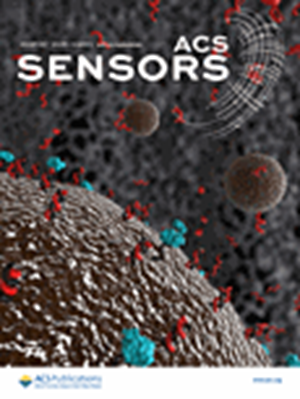Dual-Parameter Hypoxia Sensing in Spermatozoa: A Transformative Nitroreductase/Viscosity Fluorescent Probe Unravels Metabolic Dysregulation Biomarkers for Andrological Diagnostics
IF 8.2
1区 化学
Q1 CHEMISTRY, ANALYTICAL
引用次数: 0
Abstract
Sperm energy metabolism, including oxidative phosphorylation and glycolysis, is critical for sperm function. Environmental stressors like hypoxia can disrupt metabolic activities, potentially leading to fertilization failure. As an NADH-dependent flavin reductase, altered nitroreductase (NTR) levels may reflect hypoxic metabolic abnormalities. However, no studies have reported the detection of hypoxia conditions in spermatozoa to date. To address this diagnostic gap, we first performed metabolomic analysis on normal and clinically infertile spermatozoa. Hypoxia-mediated metabolic dysregulation in spermatozoa is unveiled as a pivotal mechanism underlying idiopathic male infertility, with clinical metabolomics revealing impaired anaerobic glycolysis (50% lactate reduction, p < 0.0001; 1174-fold PEP accumulation, p < 0.0001 vs controls). Subsequently, to address the critical need for monitoring the hypoxia microenvironment of spermatozoa, we developed PPy, a dual-response fluorescent probe with NTR and viscosity. This first-in-spermatozoa probe demonstrates viscosity-driven near-infrared enhancement at 706 nm (32-fold, Stokes shift >220 nm) and NTR-activated green emission around 562 nm, enabling real-time hypoxia mapping in live systems. Confocal validation in pathological models (H2O2-stressed/infertile spermatozoa) quantified obvious NTR activity loss and diminished capacity for viscosity regulation and successfully established NTR as a diagnostic biomarker (AUC = 0.975, ΔMFI < 12.39% with 100% sensitivity and 90% specificity). Thus, our study introduces innovative tools and actionable biomarkers for clinical andrology settings, which uncover profound hypoxia-induced impairments in spermatozoa of infertile patients, thereby advancing both therapeutic strategies for infertility and mechanistic investigations into fertilization disorders.

精子双参数缺氧传感:转化硝基还原酶/粘度荧光探针揭示代谢失调的生物标志物,用于男科诊断
精子的能量代谢,包括氧化磷酸化和糖酵解,对精子的功能至关重要。像缺氧这样的环境压力会破坏代谢活动,可能导致受精失败。硝基还原酶(NTR)作为nadh依赖的黄素还原酶,其水平的改变可能反映了缺氧代谢异常。然而,到目前为止,还没有研究报道在精子中检测到缺氧情况。为了解决这一诊断差距,我们首先对正常和临床不育精子进行了代谢组学分析。精子缺氧介导的代谢失调是特发性男性不育症的关键机制,临床代谢组学显示无氧糖酵解受损(50%乳酸减少,p <;0.0001;1174倍PEP积累,p <;0.0001 vs对照)。随后,为了解决监测精子缺氧微环境的迫切需求,我们开发了PPy,一种具有NTR和粘度的双响应荧光探针。这种精子内探针在706 nm(32倍Stokes位移220 nm)处具有粘度驱动的近红外增强,在562 nm处具有ntr激活的绿色发射,可在活体系统中实现实时缺氧定位。病理模型(h2o2胁迫/不育精子)共聚焦验证量化了明显的NTR活性丧失和粘度调节能力下降,并成功建立了NTR作为诊断性生物标志物(AUC = 0.975, ΔMFI <;12.39%,灵敏度100%,特异性90%)。因此,我们的研究为临床男科设置引入了创新的工具和可操作的生物标志物,揭示了严重的缺氧导致的不育患者精子损伤,从而推进了不孕不育的治疗策略和受精障碍的机制研究。
本文章由计算机程序翻译,如有差异,请以英文原文为准。
求助全文
约1分钟内获得全文
求助全文
来源期刊

ACS Sensors
Chemical Engineering-Bioengineering
CiteScore
14.50
自引率
3.40%
发文量
372
期刊介绍:
ACS Sensors is a peer-reviewed research journal that focuses on the dissemination of new and original knowledge in the field of sensor science, particularly those that selectively sense chemical or biological species or processes. The journal covers a broad range of topics, including but not limited to biosensors, chemical sensors, gas sensors, intracellular sensors, single molecule sensors, cell chips, and microfluidic devices. It aims to publish articles that address conceptual advances in sensing technology applicable to various types of analytes or application papers that report on the use of existing sensing concepts in new ways or for new analytes.
 求助内容:
求助内容: 应助结果提醒方式:
应助结果提醒方式:


